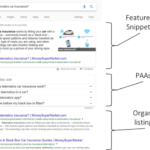
Subheadings are one of the most underutilized and overlooked elements of strong writing. When used strategically, subheadings can greatly enhance reader experience, improve SEO, and boost engagement. This comprehensive guide will teach you everything you need to know about crafting catchy, keyword-rich subheadings that elevate your content.
What Are Subheadings and Why Are They So Important?
Subheadings are short phrases or sentences within a piece of content that summarize specific sections or introduce topics and themes. They break up large blocks of text into more digestible chunks for readers.
Effective subheadings provide a multitude of benefits:
- Give readers a roadmap to follow– Subheadings help readers quickly scan an article or document to understand its structure, allowing them to skip to parts most relevant to them. This improves readability, especially for long-form content.
- Enhance scannability– Online readers are often skimmers looking for information quickly. Subheadings make it easier to scan and pick out key points in a sea of text.
- Highlight important keywords– Subheadings present an opportunity to incorporate keywords naturally to improve SEO. Search engines place extra weight on words appearing in headers.
- Increase shareability– When content gets shared on social media, subheadings are prominently displayed along with titles to provide context. Magnetic subheading boost click-through rates.
- Organize thoughts and themes– Grouping content into logical sections with descriptive subheadings helps writers organize thoughts into a coherent narrative flow.
- Improve retention– Breaking up content into consumable chunks focused on a specific topic aids reader comprehension and retention.
- Offer visual relief– Subheadings visually separate ideas, which helps reader focus compared to dense unbroken paragraphs.
In short, subheadings are a reader-friendly tool that enhances scannability, comprehension, shareability, and search visibility – making them invaluable in modern writing.
How to Write Engaging, Keyword-Focused Subheadings
Subheadings should grab the reader’s attention while accurately describing the section content and keywords. Here are tips to craft sticky, SEO-friendly subheading:
- Incorporate keywords organically– Work primary and secondary keywords into subheadings in a natural way. Avoid awkward phrasing just to force a keyword.
- Write conversationally– Use casual, conversational voice with active verbs. Speak directly to the reader when possible.
- Keep them short and sweet– Subheadings should be about 5-10 words maximum. Long subheading lose impact and defeat the purpose.
- Ask intriguing questions– Turning subheadings into open-ended questions that sections will answer engages readers.
- Leverage numbers– If writing tutorials or list posts, use numbers to structure subheads, e.g. “10 Tips for…”
- Avoid overusing article titles– Don’t simply re-use article or section titles as subheadings. Create unique, descriptive subheading.
- Add variety– Mix up length, voice, and structure between subheading. Monotony puts readers to sleep.
Following these tips will result in subheading that capture attention, communicate key topics, and incorporate SEO keywords – the perfect combination!
Types of Subheadings and When to Use Them
Generally, subheadings fall into two categories – descriptive or question-based:
Descriptive Subheading
These directly describe or summarize the content covered in the section. They are highly versatile and work well in most articles and documents.
For example:
- Advantages of Summary Subheadings
- Step-by-Step Instructions for Beginners
Question-Based Subheadings
These take the form of an open-ended question that the section will then answer for readers. Using questions taps into reader curiosity and boosts engagement.
For example:
- What Are the Benefits of Daily Meditation?
- How Can I Improve my Search Engine Rankings?
When to use each type:
- Descriptive subheading provide a simple breakdown of topics covered. Use them in most body sections.
- Question subheading are perfect for FAQs, how-tos, tutorials, and list posts.
- Combine both types within a long piece for maximum interest and SEO value.
Now let’s look at subheading best practices to deploy them effectively.
Best Practices for Maximizing the Impact of Subheadings
Simply adding random subheading does not guarantee increased readership and visibility. There are strategic best practices to leverage subheadings:
- Place subheads strategically in longer paragraphs– Look for logical breakpoints in dense blocks of text where subheads can provide relief and refocus readers. Avoid subheading overload.
- Structure content using subheaders– Plan content structure early. Use subheads to segment information into logical, easy-to-digest sections.
- Format subheadings consistently– Increased text size, weight, and whitespace differentiate subheads from body text. Follow consistent typographic conventions.
- Optimize keyword placement– Work primary and secondary keywords from research into subheads organically. This boosts SEO visibility.
- Match subheading style to content– Modify subheading length, questioning style, numbers, etc. to match the type of content (list posts, tutorials, etc.)
- Don’t force it– Only use natural subheads that enhance the content. Unnecessary subheads are distracting.
Properly optimized subheading make content more readable, shareable, and findable online. But be wary of over-optimization and forced subheading that exist solely for SEO purposes – strike a balance.
Subheading Tips for Different Content Types
The subheading style you choose should adapt to the specific content type you are writing. Here are tips for various formats:
Blog Posts/News Articles
Subheading help break up long narratives. Use a mix of descriptive and question-based subheads. Include keywords where possible. Keep a conversational, active tone.
List Posts/Roundups
Number subheading to logically structure advice and tips. Incorporate keywords into each tip subhead. Ask questions to build curiosity. Use a list intro subhead, like “Top 10 Tips for X”.
eBooks/Guides
Format subheading with title case and larger fonts to clearly differentiate chapters/sections. Summarize key themes with descriptive subheads using keywords.
Case Studies
Use subheading to segment company/background, challenge, solution, and results sections. Incorporate keywords related to the industry/offering.
Reports/Whitepapers
Subdivide long analysis and data with subheads that summarize findings. Pose questions addressing problems the content will solve. Include relevant terms.
Regardless of content type, excellent subheadings boost engagement and comprehension. Treat them as importantly as opening paragraphs and titles when creating content. Follow the strategies in this guide to take your subheading game to the next level!






